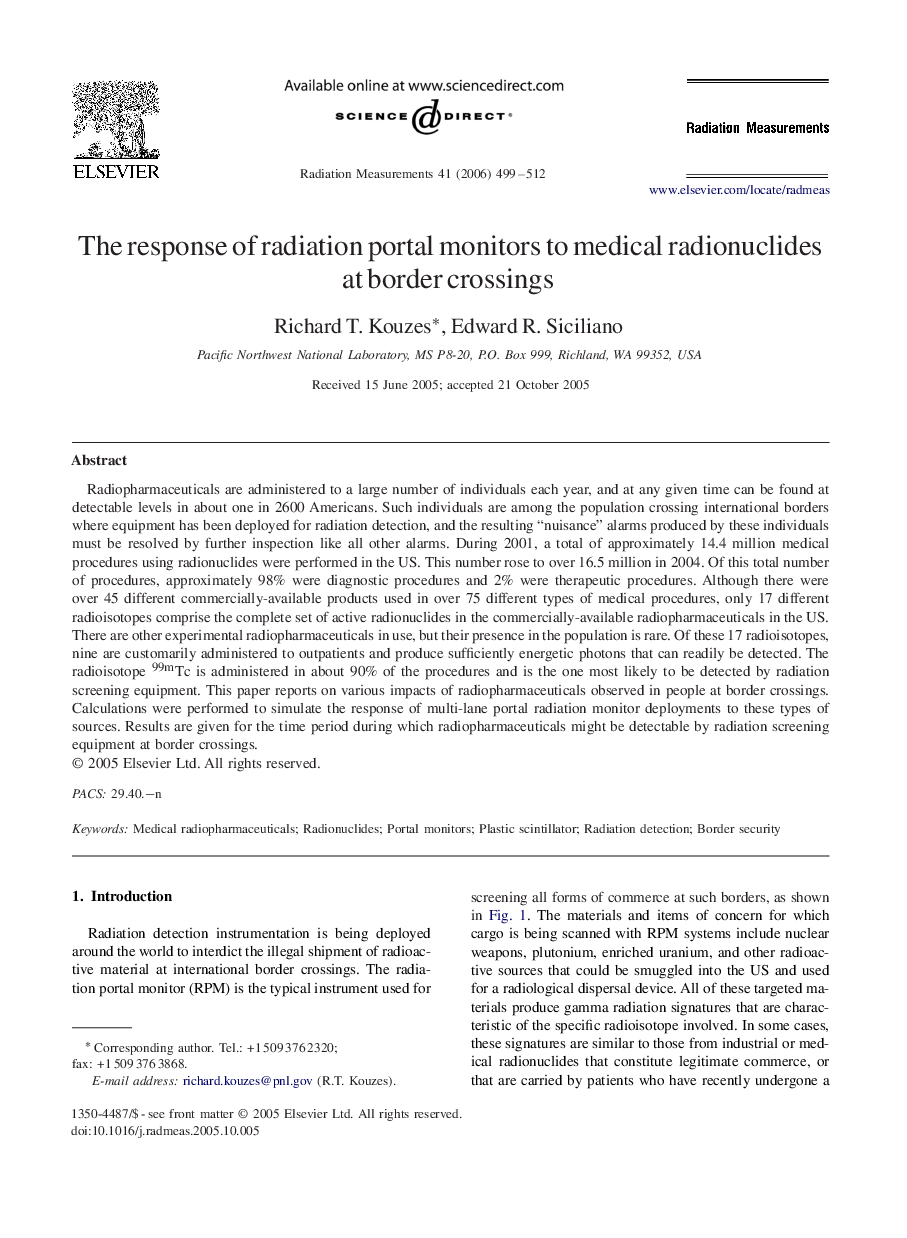| Article ID | Journal | Published Year | Pages | File Type |
|---|---|---|---|---|
| 1884686 | Radiation Measurements | 2006 | 14 Pages |
Radiopharmaceuticals are administered to a large number of individuals each year, and at any given time can be found at detectable levels in about one in 2600 Americans. Such individuals are among the population crossing international borders where equipment has been deployed for radiation detection, and the resulting “nuisance” alarms produced by these individuals must be resolved by further inspection like all other alarms. During 2001, a total of approximately 14.4 million medical procedures using radionuclides were performed in the US. This number rose to over 16.5 million in 2004. Of this total number of procedures, approximately 98% were diagnostic procedures and 2% were therapeutic procedures. Although there were over 45 different commercially-available products used in over 75 different types of medical procedures, only 17 different radioisotopes comprise the complete set of active radionuclides in the commercially-available radiopharmaceuticals in the US. There are other experimental radiopharmaceuticals in use, but their presence in the population is rare. Of these 17 radioisotopes, nine are customarily administered to outpatients and produce sufficiently energetic photons that can readily be detected. The radioisotope 99mTc is administered in about 90% of the procedures and is the one most likely to be detected by radiation screening equipment. This paper reports on various impacts of radiopharmaceuticals observed in people at border crossings. Calculations were performed to simulate the response of multi-lane portal radiation monitor deployments to these types of sources. Results are given for the time period during which radiopharmaceuticals might be detectable by radiation screening equipment at border crossings.
